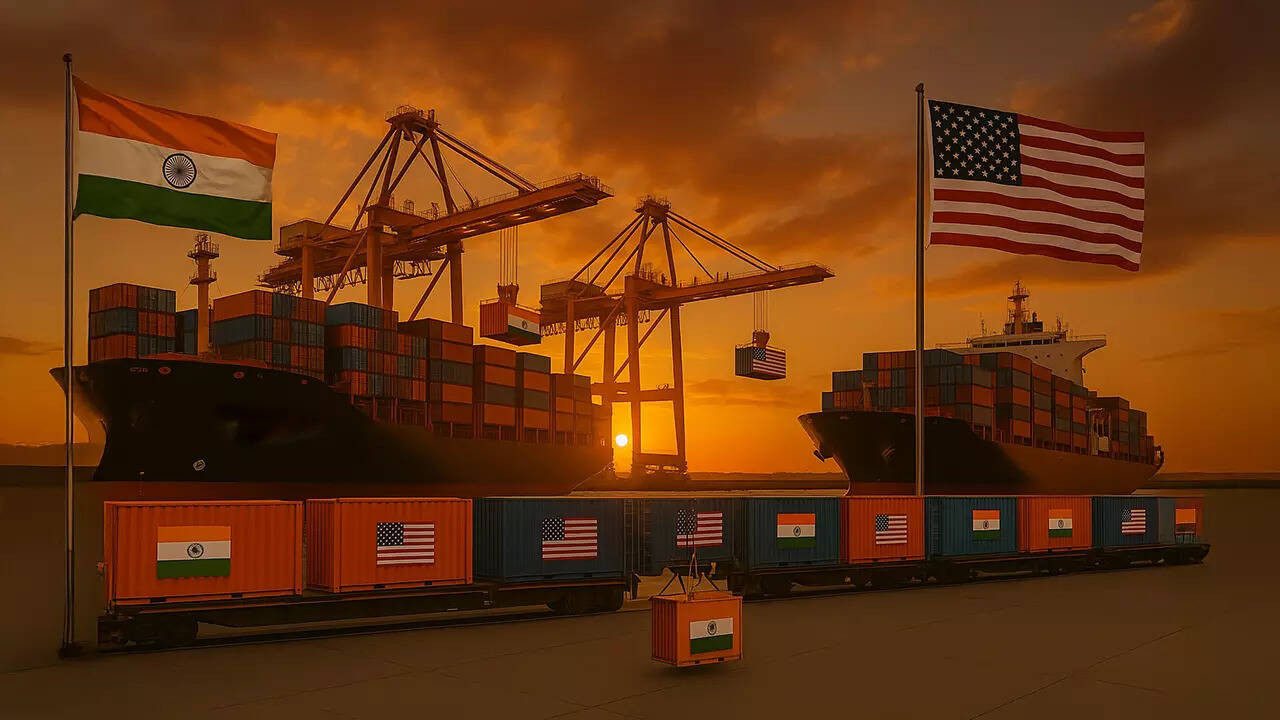As Donald Trump intensifies trade efforts, India is likely to finalize a trade agreement with the US, with a deadline extension granted until August 1. While India anticipates finalizing a deal, experts caution that any agreement might not shield Indian exports from future unilateral tariff increases.
Navigating the Labyrinth: An India-US Trade Deal on the Horizon?
Whispers of an imminent India-US trade deal are swirling, fueled by pronouncements from across the Atlantic. But beneath the surface optimism, a current of caution runs strong, particularly in India. Is this a genuine step toward strengthened economic ties, or are we on the precipice of a high-stakes negotiation where India could face escalating pressure?
The potential benefits of a comprehensive trade agreement are undeniable. Increased market access for Indian goods in the US, streamlined regulations for Indian companies operating stateside, and deeper cooperation on technological innovation all paint a promising picture. For the US, a deal would solidify its presence in a rapidly growing market, create opportunities for American businesses, and potentially reshape global supply chains.
But the path forward isn’t paved with roses. Previous trade negotiations have been fraught with sticking points, and the current geopolitical landscape adds layers of complexity.
Understanding the Nuances of the Proposed Trade Agreement
One key area of contention has historically been agricultural products. The US has long sought greater access to the Indian agricultural market, but India has been hesitant, citing concerns about protecting its domestic farmers and maintaining food security. Finding a mutually agreeable solution that addresses both nations’ needs will be crucial. Another important consideration involves intellectual property rights, where differing interpretations and enforcement mechanisms have created friction in the past. The details of the deal pertaining to these areas will need careful examination.

Beyond specific sectors, the broader economic philosophies of the two nations also come into play. India has traditionally adopted a more protectionist approach to trade, prioritizing domestic industries and strategic sectors. The US, while generally advocating for free trade, has also shown a willingness to use tariffs and other measures to protect its own interests. This fundamental difference in approach could make compromise difficult.
The Specter of US Pressure: A Balancing Act for India
Perhaps the most pressing concern for India is the potential for escalating US pressure in future trade talks. While the allure of a trade deal is strong, India needs to be vigilant in safeguarding its economic sovereignty and ensuring that any agreement reached is truly mutually beneficial. The US has a track record of employing assertive negotiating tactics, and India needs to be prepared to stand its ground on issues of vital national interest.
For instance, previous administrations have linked trade access with commitments on issues like data localization and environmental regulations. While these are important considerations, India needs to ensure that such demands don’t undermine its own development goals or constrain its policy space. This is especially relevant in the context of climate change, where a one-size-fits-all approach from the US could be detrimental to India’s ability to achieve its sustainable development targets. You might find this discussion of India’s economic development interesting too.
The Road Ahead: Strategic Considerations for India
So, what should India do? A proactive and strategic approach is essential.
First, India needs to clearly define its red lines and priorities for the trade negotiations. This includes identifying sectors where greater market access is desired, as well as those where protection is paramount. A well-defined negotiating strategy will provide a strong foundation for discussions with the US.
Second, India needs to engage in proactive diplomacy, building alliances with other nations that share similar concerns about US trade practices. This will help to create a counterweight to US pressure and ensure that India’s voice is heard.
Third, India needs to focus on strengthening its own domestic economy, making it more competitive and resilient. This will reduce its dependence on any single trading partner and enhance its negotiating leverage. Improving infrastructure, streamlining regulations, and investing in skills development are all crucial steps in this direction.
The pursuit of an India-US trade deal is a complex undertaking with both significant opportunities and potential risks. By adopting a strategic and proactive approach, India can navigate this labyrinth successfully and forge a trade relationship that is both mutually beneficial and sustainable. The key is to approach negotiations with a clear understanding of its own interests and a willingness to stand its ground when necessary.
URL Slug: india-us-trade-deal







